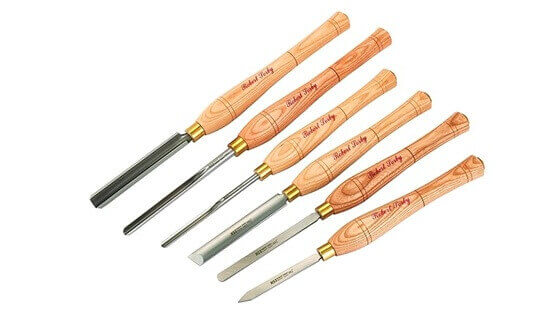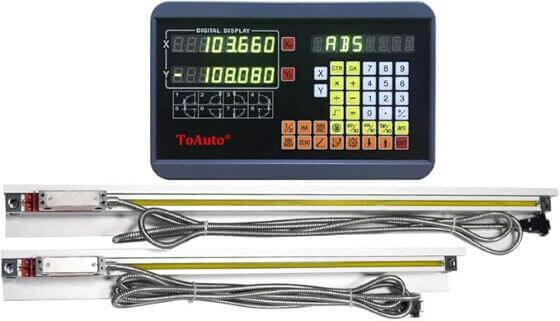The lathe is a foundational machine tool, revered for its ability to shape raw material into intricate cylindrical forms. However, when newcomers explore the world of turning, a crucial distinction often arises: the difference between a wood lathe vs metal lathe. While both operate on a similar principle, they are distinct machines engineered for vastly different materials and tasks. Understanding these differences is paramount for safety, achieving desired results, and making the right investment for your workshop.
This comprehensive guide will dissect the key differences between wood lathes and metal lathes, examining their construction, speed, tooling, applications, and much more. By the end, you’ll have a clear understanding of each machine’s purpose and capabilities, helping you decide which type is right for your projects.

The Shared DNA: A Quick Refresher on Lathe Fundamentals
Before we highlight the differences, it’s important to remember the common principle that defines all lathes. At their core, both wood and metal lathes work by rotating a workpiece securely against a cutting tool, which then removes material to achieve the desired shape. This fundamental concept of turning is ancient, yet it remains incredibly effective. For a deeper dive into the basic mechanics and history of this versatile machine, you can explore our foundational article, What is a Lathe Machine?.
Despite this shared operational principle, the vastly different properties of wood and metal necessitate entirely different machine designs and capabilities.
Key Differences: Wood Lathe vs Metal Lathe Detailed
Let’s break down the critical distinctions:
1. Construction, Rigidity, and Weight
- Metal Lathe: Built for extreme rigidity. Metal lathes typically feature heavy, robust cast iron construction throughout the bed, headstock, and tailstock. Precision-ground ways are essential. This massive build is necessary to withstand the immense cutting forces generated when machining hard metals like steel or stainless steel, and to absorb vibrations for maintaining tight tolerances. They are significantly heavier than wood lathes of comparable size.
- Wood Lathe: While quality wood lathes also utilize cast iron for stability (especially in the bed), their overall construction can be lighter. The cutting forces in woodturning are considerably lower. Rigidity is still important for a good finish and safety, but the engineering demands are less extreme than for metal.
2. Speed Range & Control (RPM)
- Metal Lathe: Operates at significantly lower RPM ranges. Speeds are carefully selected based on the material being cut, its diameter, and the type of cutting tool used. Too high a speed can overheat and damage both the tool and the workpiece, and create unsafe conditions. Metal lathes often incorporate gearboxes or sophisticated Electronic Variable Speed (EVS) systems designed to deliver high torque at these lower speeds.
- Wood Lathe: Operates at much higher RPM ranges. Wood generally cuts cleaner and smoother at higher speeds. This lathes use either manual multi-step belt changes or EVS systems, which might not prioritize low-end torque as much as their metalworking counterparts.
3. Motor Power and Torque Characteristics
- Metal Lathe: Typically equipped with motors designed to provide substantial torque, especially at lower RPMs, to handle the resistance of cutting metal. Horsepower ratings can be significant, even for benchtop models.
- Wood Lathe: Motor horsepower is generally adequate for the material. While torque is needed, maintaining appropriate RPM for a clean cut is often a greater focus than sheer low-speed grunt.
4. Tooling and Tool Holding Systems
- Metal Lathe: Utilizes precisely ground High-Speed Steel (HSS) tool bits or carbide inserts held rigidly in a tool post. This tool post is mounted on the carriage and compound rest, and its movement is precisely controlled by handwheels (with graduated dials) or via CNC.
- Wood Lathe: The most common method involves hand-held tools (gouges, skew chisels, scrapers, parting tools) that the operator guides by resting them on an adjustable tool rest positioned close to the workpiece. While some specialized wood lathes might use carriage-mounted tools for specific tasks, freehand tool control is the hallmark of traditional woodturning.
5. Precision and Tolerances
- Metal Lathe: Designed and built to achieve very tight tolerances – often to thousandths of an inch (0.001″) or even ten-thousandths (0.0001″) for precision models. Features like precision lead screws, adjustable gibs, and robust construction contribute to this.
- Wood Lathe: While accuracy is important, the achievable tolerances are generally looser than in metalworking due to the nature of wood and the common use of hand-held tools.
6. Coolant Systems
- Metal Lathe: Often equipped with or designed to accommodate coolant systems (flood or mist). Coolant is crucial for lubricating the cut, cooling the tool and workpiece, and flushing away sharp metal chips (swarf).
- Wood Lathe: Coolant is never used in woodturning, as it would damage the wood.
7. Chip and Dust Management
- Metal Lathe: Produces sharp, often hot, metal chips. Chip guards and chip pans are common features to manage swarf and protect the operator.
- Wood Lathe: Generates wood shavings and fine dust, which can be a respiratory hazard and a workshop cleanliness issue. Effective dust collection systems are highly recommended.
Can You Use a Wood Lathe for Metal (or Vice-Versa)? A Crucial Warning!
This is a common question with a very important answer:
- Using a Wood Lathe for Metal: Absolutely NOT Recommended. This is extremely dangerous. Wood lathes lack the necessary rigidity, operate at speeds far too high for safe metal cutting (which can cause tool shattering or workpiece ejection), and their tool rests are not designed to withstand the forces involved in metal cutting.
- Using a Metal Lathe for Wood: Technically Possible, But Highly Impractical & Not Ideal. While you could mount wood on a metal lathe, the experience would be poor:
- Speeds are generally too low for a good finish on wood.
- The setup is optimized for rigid metal cutting tools, not hand-held woodturning tools.
- Wood dust can infiltrate and damage the precision components (lead screws, gears, ways) of a metal lathe, which are often not sealed against fine dust.
- It’s generally an inefficient and potentially frustrating endeavor.
In short: Use the right machine for the right material.
Typical Applications: What Are They Made For?
The intended use cases clearly highlight their differences:
Wood Lathe Applications
Wood lathes excel at creating a vast array of items, from functional to purely artistic. Common projects include bowls, platters, pens, tool handles, furniture legs, spindles, candlesticks, boxes, and decorative art pieces. The skill of the turner directly influences the outcome. If you’re starting your journey in this craft, our guide to the Best Wood Lathe for Beginners can help you choose a suitable first machine, and for broader options, see our review of the overall Best Wood Lathes.
Metal Lathe Applications
Metal lathes are fundamental in engineering, repair, and manufacturing for producing precise components. Typical items include shafts, axles, bushings, custom bolts and nuts, threaded rods, pipe fittings, engine parts (pistons, valves), precision spacers, and prototypes. Even compact machines, like those featured in our Best Mini Metal Lathe guide, can produce incredibly accurate small parts.
Wood Lathe vs Metal Lathe: Which One Do You Need?
The choice is primarily dictated by:
- The Material You Plan to Work With: This is the most straightforward factor. If it’s wood, you need a wood lathe. If it’s metal, you need a metal lathe.
- Project Types: Consider the size and nature of the items you want to create.
- Required Precision: Metalworking typically demands higher precision than general woodturning.
- Budget & Space: Metal lathes, especially larger ones, tend to be more expensive and require more robust support than wood lathes of comparable capacity.
It’s also worth noting that for those seeking automated precision in either material, CNC (Computer Numerical Control) lathes offer another level of capability. These machines use computer programs to control the cutting process, enabling complex shapes and high repeatability. You can learn more about this technology in our article, What is a CNC Lathe Machine?
Conclusion: Purpose-Built for Different Worlds
While the terms “wood lathe” and “metal lathe” share the word “lathe,” they represent distinct families of machines, each meticulously engineered for the unique challenges and characteristics of the materials they are designed to shape. From their foundational construction and speed capabilities to their tooling and safety considerations, they are fundamentally different. Attempting to use one for the other’s primary purpose is inefficient at best and dangerously unsafe at worst.
By understanding these core differences outlined in this wood lathe vs metal lathe comparison, you can confidently choose the correct type of machine to embark on your turning or machining projects, ensuring both safety and success in your workshop.




